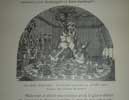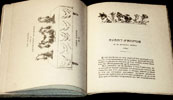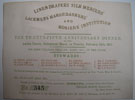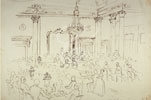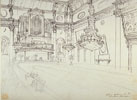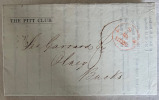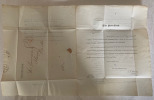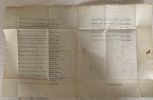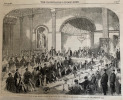LE REPERTOIRE DE LA CUISINE
NB; Missing the following Title page. Translated by E. BRUNET; Chef to the Duke of Roxburge. La bonne cuisine est la base du bonheur. A. ESCOFFIER. [an illustration of a young chef carrying a basket of fresh bread] 1st ENGLISH EDITION Coyrights 1914. On SALE LONDON: Maison ALLARD, 35a, Old Compton Street, W,1. PARIS: DUPONT & MALGAT, 40, Rue Coquilliere, 40. 1924.
190 x 130mm. 1fep. Half-title. [1] Title Page missing [1] Dedication to Auguste Escoffier. [1] vii Hors-d'Oeuvre a la Francaise. [1] ix-xi Preface. [1] xiii-xiv The Menu/The Wines. xv-xvi French Culinary Terms, Full page hard card advert from Leon Jagegi. xvii- xx The Index A-L. All the chapters have nice illustrations at the beginning and end. (1)2-236. 2feps. Internally very clean and tight. The original burgundy cardboard covers slightly rubbed on edges. With the spine held firmly with clear tape showing the original dark text.. The front cover with the original indented, faded gilt tooling. Their scarcity is attributed to the fact that many did not survive the harsh kitchen environment, the chef's greasy hands and being stored without thought. Most copies found are quite battered and worn.
- The great French culinary manual used by all trained chefs as an aide-memoire and reference. Although no quantities are given most chefs don't need them as the book was used in their training colleges and they have not forgotten the quantities. It was needed mostly when the Chef de Cuisine put up on the notice board new seasonal menus or banquet menus. Then the chefs would use the Repertoire as a reminder. This is no longer the case. Due to more and more innovative menus and recipes with diverse ingredients used, the Repertoire is not consulted as it used to be. But, all trained professional chefs hold this book in high regard, although one wonders for how long. Even without the missing title-page, a very scarce copy.



click on image to enlarge

Modern category
ref number:
11304 



